
What does it take to create large scale impact?
Three leaders with experience of creating large scale impact both in Australia, and overseas in the UK share their insights about what it takes to create impact at scale.
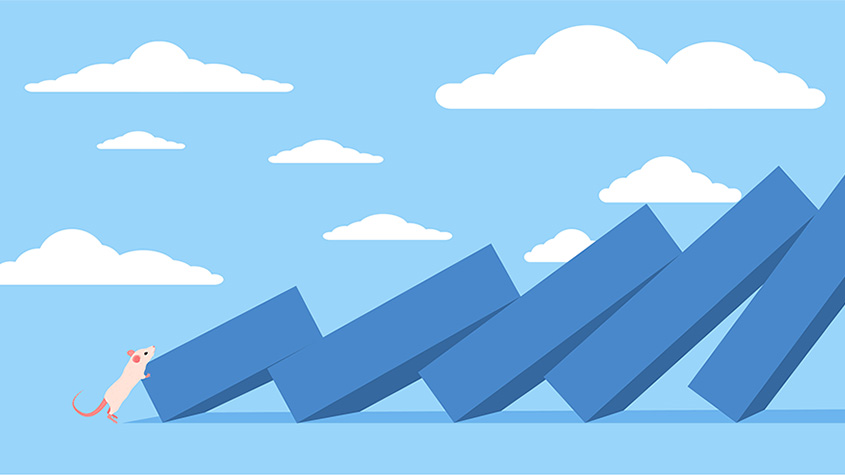
- The three leaders in social change each gave different perspectives and insights on achieving large scale impact.
- Matthew Taylor, Chief Executive Officer, UK National Health Service Confederation, identified complexity and unpredictability as two reasons why large scale change fails. The solution to this is to ‘think like a system, and act like an entrepreneur’ which requires a shared, viable vision; deep and strong collaboration and the right processes; and good and continuous data.
- Kristy Muir, Chief Executive Officer, Paul Ramsay Foundation (PRF) acknowledged the incredible work being done around the country and called out three areas that needed working on: voice, choice, and accountability. She also identified three topics to explore to help think about the ecosystem for funding across multiple categories: technical approaches, disrupting resource flows and shifting hearts and mindsets.
- Cindy Reese Mitchell, Program Director for Indigenous Women’s Entrepreneurship, Good Return, has observed that scaling impact across Indigenous communities needs to be consistent with Indigenous information sovereignty and recommends specific behaviours and actions to achieve this including demonstrating trustworthiness in how we work; showing respect in how and when Indigenous knowledges are shared and being careful about the outcomes we’re trying to scale.
At SVA’s summit into impact at scale, we invited three leaders in social change to answer the question ‘what does it take to create impact at scale?’
The three leaders’ responses covered a broad range of perspectives and experience, ranging from dealing with large systemic changes in UK’s National Health Service, through place-based community projects across Australia, to working with an Indigenous women’s entrepreneurship program in the Kimberleys which provides takeaways for people working with First Nations people.
Their presentations provide useful insights on what it takes to scale impact.
The three leaders are:
- Matthew Taylor, Chief Executive Officer, UK National Health Service Confederation
- Kristy Muir, Chief Executive Officer, Paul Ramsay Foundation
- Cindy Reese Mitchell, Program Director for Indigenous Women’s Entrepreneurship, Good Return.
Suzie Riddell, CEO of SVA moderated the discussion.
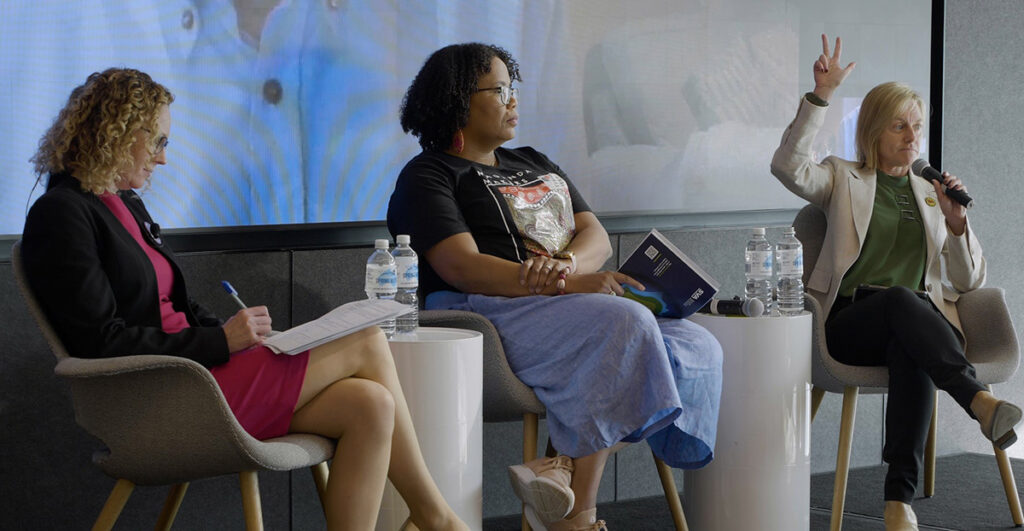
Matthew Taylor: Scaling impact is complex and unpredictable
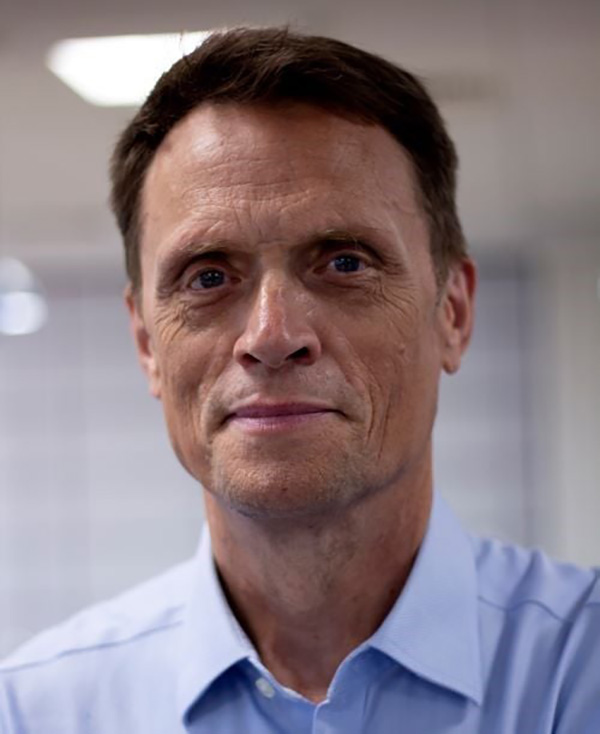
Bringing an international perspective, Matthew Taylor, CEO, UK National Health Service Confederation, has previously held the roles of Chief Adviser of Political Strategy to Tony Blair, then UK Prime Minister, and ran the Institute for Public Policy in the UK for four years.
Taylor described himself as having spent the whole of his career as trying to achieve change in various ways: as a local politician, as a political strategist, as a think-tank director, as the director of a Royal Society, and now as head of an organisation that represent leaders across the health service.
“All those years have taught me a lesson, and that is that achieving change, particularly when it involves trying to change what people do or their attitudes, is incredibly difficult. And it fails more often than it succeeds,” he said. “This is true of public policy, corporate strategies as well as in the third sector.”
And he likened the challenge of scaling impact as similar. So why is this change difficult?
Taylor identified two concurrent reasons why change goes wrong or why we don’t achieve what we want with the strategies and policies:
- Complexity. We’re trying to achieve change in complex systems. “Human systems are complex by their very nature, partly because they’re iterative. Human beings aren’t passive objects; they respond to changing circumstances.
So human systems are complex,” said Taylor. “For example, the Health Service in England is incredibly complex. It would take a long time to describe let alone to think about how you change it. “What happens when we pursue change in complex systems, is we try to change one or two variables in the system, but the complexity of the system means that other things then start to happen which we didn’t expect.“
As a result, the impact we’re trying to achieve dissipates, or sometimes is counterproductive. “I’ve also seen that when something is initiated, it has some effect when the [leaders] politicians, the civil servants, the chief executive, are behind it. But then after a while, other priorities and issues come along. The focus shifts, and then things revert to how they were before. The effect has become dissipated and lost in the wider complex system.” - Unpredictability. When you initiate the change, things rarely turn out as planned. “When we try to pursue change, we normally spend quite a lot of time building support for the change. We develop a proposal, we negotiate it, we agree what the budget will be. It can take years to get large organisations or governmental bodies to agree to do something.” Taylor said that when you finally start the change, and make contact with reality, things turn out not to be quite what you thought they were going to be. “And then you’re faced with a choice. Because it’s very hard to admit that we’ve got things wrong, and because we’re not very agile, we end up trying to prove that what we’re doing is right, more than actually trying to make it right.” A colleague of his in No 10 Downing St, Sir Geoff Mulgan, described this as the shift from evidence-based policymaking to policy-based evidence making, something Taylor was sure that the audience would recognise from their own experience.
Think like a system and act like an entrepreneur
In response to these two problems, and after a lot of thought, Taylor said that he came up with a phrase which sums up his insights. “When dealing with change: ‘you should think like a system, and act like an entrepreneur.’”
Taylor explained that you need to understand that you have to achieve change at a system level if you want that change to be enduring. “But that – and this might seem paradoxical,” he said, “because they appear to be two very different mindsets – you then have to approach change in a highly opportunistic, agile, adaptive kind of way, because the world is so unpredictable.”
Taylor said to achieve these two approaches, you need to understand that the following is necessary:
- Put time into agreeing a shared, viable vision of what your end state is. “You need to spend a great deal of time thinking about what this new system will be like. Where are you trying to get to with the system? How will the system as a whole look and feel? When you’ve achieved the change that you’re trying to achieve, what will its new interdependencies and dynamics be? And if you can’t vividly, credibly describe what this new system will look like, then you probably need to continue to work at it.”
He likened it to the concept in Abraham Lincoln’s famous quote: ‘if I had eight hours to chop down a tree, I’d spend the first six hours sharpening my axe’ meaning that we should all spend more time in this preparation stage.In thinking about what this new system will be like, Taylor said, you need to think about human motivation. “Humans are motivated by three things: authority – they do what they’re told; values and belonging – they do what they think is right; and interests – what they think is right for themselves as authors of their own lives. In the new system, are these motivations aligned? Then be willing to return to that vision as things change on a reasonably regular basis. Every change process, every few months, go back and ask, does that credible vision of the future that we described still pertain? Do we need to think differently about it?”
- Build really deep and strong collaboration and have the right kind of process. “You need to build strong relationships between all the people involved in delivering change, and this is particularly important when the change involves numerous different agencies or communities. Often we do not do the groundwork necessary.
Taylor said he was often surprised as he advised different collaborations in the health service. “I can be with people who’ve sat in a room together for years – on a committee or a board – and they do not know each other as human beings. I go in and do something incredibly simple, say just to talk about their life stories and it’s like a blossoming.
Taylor said this was important because when you’ve been asking people to collaborate, you’re asking them to put their self-interest and the interest of their organisation second behind a share and collective interest. “This is an act of love. Those are the kinds of things that friends and family do for each other. Yet we create collaborative structures, and expect strangers to do this for each other.”As well as this, you have to have the right processes. For example, it’s almost impossible to think like a system and act like an entrepreneur, if the process of working together is hierarchical, badly facilitated or not followed through, explained Taylor. “On the other hand, if the process is egalitarian, well-structured and there’s lots of follow through, then the process can enable this kind of working.” - Need really good and continuous data and insight. “If you’re pursuing a course of change, and you want to be agile and responsive, you need to be able to know what’s going on as quickly as you possibly can, so that you can learn from this.”
“For us change makers, this is much more easy now, to be able to generate the kind of data and insight and to be able to see what’s going on. Thirty or 40 years ago, one of the problems was that the feedback process was too slow; it was very difficult to know what was happening until it was too late.”
When it comes to centring people and communities and empowering people around what they want in their lives, what does that look like for a large healthcare system?
Taylor said that you have to recognise that people have different relationships to different resources.
“If your viable vision for the future is not one which aligns with what people care about, then it’s unlikely to succeed. A huge amount of failure, mistakes, waste and pain have been caused by people in authority thinking that they know what people want and care about. Which is why, it’s incredibly important to go through that process when one’s talking about the broad objectives one was trying to achieve.”
“But different types of change require us to think about different models, said Taylor.
“Because if we are not listening and understanding what matters to people, then we’re going to get it wrong.”
Taking an example from the health service, where there are variations in the way people do medical operations and there’s strong evidence of the right way to do it, Taylor said, we should try to get all the surgeons to do the right thing.
“These are social interventions. What we’re trying to do is change which involves people and the stuff they care about. And that’s why if you don’t engage people as true partners, you’re unlikely to succeed.
“For me, there is a moral requirement, that we engage the people whose lives we – as policymakers, power holders – are trying to shape in a benign way, as full partners.
“Because if we are not listening and understanding what matters to people, then we’re going to get it wrong. Because people are not going to react in the way that we think that they’re going to react.”
“… the response is to try to understand what it is that people value, to explore with people what matters to them.”
Taylor gave the example of closing hospitals which are no longer fit for purpose and concentrating facilities in different ways. “Populations respond badly to that because an institution which they feel a deep relationship to is being taken away from them.”
“The response to that is not to say ‘you’re being stupid, look at the evidence’; the response is to try to understand what it is that people value, to explore with people what matters to them. Yes, safe medical procedures and good outcomes matter, but so too does having resources close to them and having people that they can develop a relationship with. If you go through that process, you’re likely to end up with a different idea about what you’re trying to get to, and one that’s more likely to succeed because it’s based on a respect for people, where they come from and what matters to them.”
Kristy Muir: Importance of voice, choice and accountability
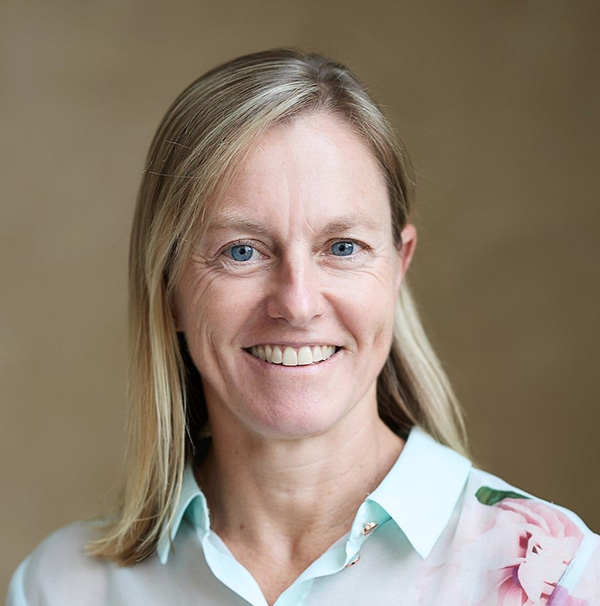
Kristy Muir, Chief Executive Officer, Paul Ramsay Foundation (PRF) has worked across a lot of different domains in Australia. Muir is a Professor of Social Policy in the Business School at University of New South Wales (UNSW) Sydney, Chair of Allan & Gill Gray Philanthropy Australasia and prior to heading up PRF, she was CEO of the Centre for Social Impact.
Muir has worked for almost three decades (as a support worker, academic, collaborator, leader and board director) with for-purpose organisations that enable children, families and communities to thrive. She said she is driven to better understand and find solutions to complex social problems and measure whether and where we are making a difference.
PRF is Australia’s largest philanthropic organisation in terms of its distribution – it has granted around $800 million to more than 200 partners and invested $100 million in a portfolio of impact investments.
How does Muir see this question of impact at scale playing out in the Australian context?
“… ensuring that people can not only access the things they may need, but also things that are culturally appropriate.”
Muir acknowledged the work that is being done around the country that has evolved and increased over time, both scaling deeply (how do you deeply impact on the lives of five families?) and more broadly.
“We have incredible leaders doing incredible work in place-based initiatives like The Hive.”1
Muir also called out the place-based work in Logan (where there are a number of community-based projects, including Logan Together) and “the linkers and connectors who are ensuring that people can not only access the things they may need, but also things that are culturally appropriate.”
However she called out a number of areas where we could make progress in scaling our impact as:
- Voice: “How do we listen to First Nations voices, to voices of people in communities, and voices of people with lived experience who are doing the witnessing, who are living in the moment, whatever that looks like.”
- Choice: “Who gets to decide which voices are listened to?”
- Accountability: “On the measurement accountability front, who gets to decide what the metrics are?And whose accountable for what?”
“As a Professor of Social Policy, I’m the first person to believe in the importance of evidence. But I’m also the first person to say that evidence is never enough.”
By way of example, Muir shared, “When I sit with First Nations leaders and communities, one of the first things that I hear is someone sharing that their grandson is failing on the education metric in this country. But, if we measure him on the basis of Indigenous language, culture, dance, and what he’s gifting to the community, he will shine every day of the week. So who gets to decide on those accountability pieces?”
Muir also spoke about complexity saying that we are starting to get better at appreciating the complexity of people’s lives and recognising that people don’t live in silos of individual issue areas.
“We all have different kinds of needs and different complexities. Incredible work is being done where people are starting to see the nuance of the intersections between things.”
By way of example, Muir referred to three maternity and child health hubs in Logan that she’d visited which provide a best-practice model of antenatal care developed by the community, for the community. The hubs are an extension of existing services at Logan Hospital. A named midwife supports women throughout pregnancy, birth and after birth and helps them to build strong partnerships with their communities and established health services.
Muir said, “If we look at efficacy on just an evidence and cost effectiveness basis, we say, put them in the hospital system. But what’s happening in Logan and where we’re seeing incredible outcomes is the maternity hub in one of the culturally diverse settings. Where they’re making people from different cultures feel much more part of the community; there’s much more social connection.”
“The point is how do we listen to people? How do we prioritise places? How do we make sure that we’re doing the listening to the voices…”
The hubs have been developed for Aboriginal and Torres Strait Islander women, Maori and Pacifica women, culturally and linguistically diverse (CALD) or non-english speaking women including refugees and migrant women and women under 18.
“The Pacifica community were losing babies at a rate that was way too high in the public hospital system. Now the mums are going in there with their kids and joining playgroups. They’ve got speech therapists. They’re connecting together, doing morning tea together. So it’s far beyond a maternity hub, but a place where communities can get together and connect,” said Muir.
“The point is how do we listen to people? How do we prioritise places? How do we make sure that we’re doing the listening to the voices, providing the choices that matter for the people that matter most, and ensuring that the accountability mechanisms that we set up around how we scale impact are listening to different groups, both top down and bottom up.”
Defining and understanding systems
PRF has designated four strategic impact areas for its philanthropic work: thriving children, employment, justice and safety, and communities and place as well as additional areas and population groups that are disproportionately affected by social policies.
Working across these areas, Muir as PRF’s CEO knows that it is really important to talk about systems.
“We need to have a conversation about systems, what we mean by systems, and which system we’re actually talking about.
“There are many different systems. So how do we think about what system we’re trying to affect? What feedback loops do we want to shift? Using the words of bioethicist Peter Singer, who has a strong interest in environmentalism and poverty relief globally, find the levers that are the smallest nudges that can have the biggest impact – whether they’re place-based, or a policy change.”
Muir said that PRF is reflecting on how we think about funding things in multiple categories. “How do we think about this as an ecosystem of people together and how might we shift things.”
She called out three buckets of work that need attention:
- Technical things: programs/interventions, policy change, regulatory change, or legislative change.
- Disrupting resource flows “Who are we listening to, who gets to make decisions, how do funds flow, who do they flow to, who are they flowing via i.e. are we doing that direct to community?”
- Shifting hearts and mindsets“For example, in relation to the fact that 667 10 to 13 year olds are in jail in Australia, how do we shift attitudes around the need to be tough on crime.”
Muir said that we need to think about where the shared purpose is – the big picture outcomes that we want to achieve – alongside individuals and communities.
“Then we can start to think about where’s the combination of people that can do things in each of those buckets of work? And how we collectively fund and resource and build the capability and capacity to enable those things to happen for the people that actually know what the solutions are, know how to do them, and can implement the changes we want to see?”
Cindy Reese Mitchell: Lack of trust is the barrier to scaling with First Nations people
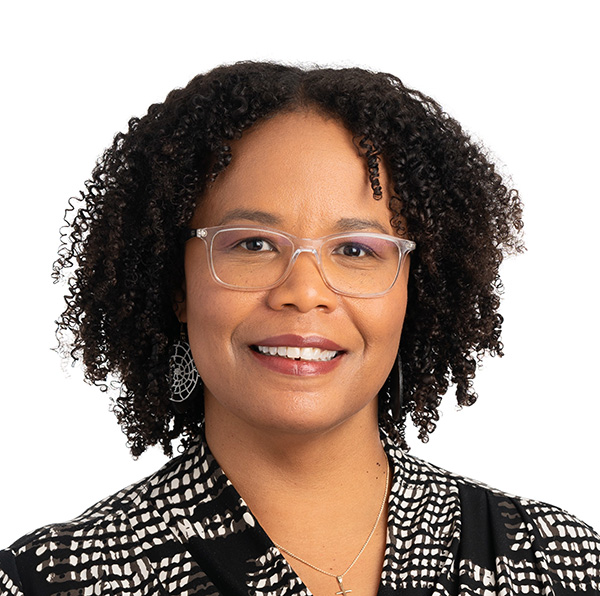
As well as working on the initiative in the Kimberleys with Aboriginal women as the Program Director for Indigenous Women’s Entrepreneurship at Good Return, Cindy Reese Mitchell is an adjunct Associate Professor at the Canberra Business School and a Board Director of SVA.
Reese Mitchell has rich experience particularly from a community level and of scaling deep in her current project with Maganda Makers in the Kimberleys.
A collaboration with Kimberley Jiyigas, an Indigenous-based business in East Kimberley Maganda Makers is a business and mentoring club set up to empower Kimberley Indigenous women to build wealth through business.
Studying and working with these organisations and women, Reese Mitchell observed that there’s a dissonance between western business and the knowledge and relationships governed by Aboriginal law.
“These women venture in two ways. One that is uniquely Indigenous, and that relates to her knowledge and relationships, and is governed by Aboriginal law. And then the western way.
“So we have systems and processes that claim to help Kimberley Indigenous women in business, but actually trigger trauma and perpetuate deficit narratives about the capacity of Indigenous women in communities.”
Reese Mitchell made it very clear that she was not intending to share the unique process they have for mentoring and business support. “I have been asked not to share without one of the matriarchs present as it is not my knowledge to share.”
“While we may be tolerated as well-meaning and useful allies for Indigenous Australians, we are not always trusted.”
Her experience, she said, fundamentally illustrates the challenge of scaling impact across Indigenous communities. And the challenge of doing it in a way that is consistent with Indigenous information sovereignty.
She identified [lack of] trust as one of the major barriers to impact at scale (not random control trials).
“While we may be tolerated as well-meaning and useful allies for Indigenous Australians, we are not always trusted.”
She emphasised the importance of building trust with Indigenous partners by truly respecting their knowledge system, culture and ways, and ensuring that what we want to scale are the outcomes that Aboriginal and Torres Strait Islander people want.
“Scaling impact across Indigenous communities needs to be consistent with Indigenous information sovereignty,” she said.
She explained that when scaling into someone else’s country, there are rules and protocols for relationships and trading in those countries.
“There’s a way that Indigenous knowledges are intended to move across space and over generations.”
In the Kimberley, this tradition of trading in valuables has its own name, said Reese Mitchell. “In short, there’s a process, I’m going to call it a ceremony, for sharing what works in one Aboriginal community, and offering it to those with the cultural authority to accept it in another place.”
To ensure philanthropists, program designers and policy makers respect this cultural authority, Reese Mitchell recommended four behaviours or actions:
- Show that we can be trusted allies in how we work with the Indigenous leaders we work with: “Ask our Indigenous collaborators how, where and when a process that appears to work in one place can be applied in another place, and recognise that this process is labour and has to be resourced with time and money. i.e. it’s not right to ask Indigenous leaders to do that sort of consultation for free.”
- Show respect for all of the conditions about how and when Indigenous knowledges are shared. “Even when insights have been purchased with philanthropy or government money.”
- Recognise that Indigenous people are rights holders not stakeholders in initiatives. “Under the United Nations Declaration of the Rights of Indigenous People, knowledge about Aboriginal and Torres Strait Islander peoples and your programs and interventions don’t belong to you. Your IP arrangements have to reflect that.”
- Be careful about the outcomes that we’re trying to scale. “We control the narrative when we choose certain outcomes and not others. We need to be sure that what Aboriginal and Torres Strait Islander people really want, what really matters to them is what’s measured.”
“… the system that dispossessed Aboriginal and Torres Strait Islander people… is the one that we’re saying we want you to participate in.”
In relation to systems and thinking about approaches that effect First Nations people, Reese Mitchell gave a word of warning.
“You have to realise that at a systems level, the system that dispossessed Aboriginal and Torres Strait Islander people, that has pushed people down, is the one that we’re saying we want you to participate in. We need to be sure that in our efforts, that we’re not perpetuating the same inequalities.
“It’s incumbent on us, who are in this space and who have the time and freedom to think about this, that we need to think about how we’re going to bring the leaders, the people we’re working alongside, with us.”
Impact at scale
SVA, with the support of the AMP Foundation and the Paul Ramsay Foundation, is investigating one of the biggest challenges in the social sector in Australia – what it takes to create impact at scale.
- The Hive is a backbone organisation of a place-based, collective impact initiative in the heart of Mt Druitt. The Hive’s approach is holistic and child-centred recognising the impact that families, communities, governments and service systems have on the wellbeing of children.




